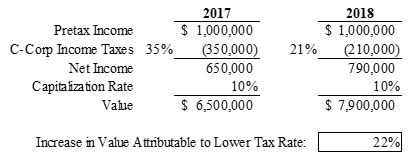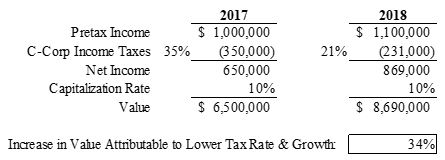When valuing a business or business ownership interest, generally there is an assumption that the value is inclusive of all the operating assets that are used by the business to generate revenues and the related profits and/or cash flow associated with the revenues. Knowing the value of the whole is sufficient for many purposes, including estate and gift tax-related work and much of the litigation related work business appraisers provide. However, there are times when the values of specific tangible assets are needed, such as in a purchase price allocation to meet financial reporting requirements, or possibly for bank financing purposes, particularly when there is SBA (Small Business Administration) loan guarantees involved.
In this context it is important to understand the various standards of value that are used in hard asset appraisal work. The standard of value employed can dramatically impact the concluded value and business owners, lenders, and accountants want to be sure all are on the same page.
The following is a summary of the various physical asset standards of value:
1. Reproduction cost new is the cost of reproducing a new replica of a property on the basis of current prices with the same or closely similar materials, as of a specific date. What would it cost to reproduce the exact same physical asset in new condition?
2. Replacement cost new is the current cost of a similar new property having the nearest equivalent utility as the property being appraised, as of a specific date. The focus is on the utility of an asset, and does not necessarily require the “reproduction” of the asset exactly. It is the amount to replace item with a new one. This is the standard that is sometimes applicable for insurance purposes, but it fails to recognize loss of value of existing item as result of deterioration (age, wear and tear, etc.). Business appraisers generally find this standard not applicable to business appraisals
3. Depreciated replacement cost new (or replacement cost, present age/condition or used) is replacement cost new less depreciation from all causes. This standard takes account of loss of value of existing item as result of age, deterioration (wear and tear), and/or obsolescence. It may or may not include make-ready costs such as delivery, installation, tooling, debugging, etc.
Depreciation as employed by this standard of value is the loss in value from all causes, including such factors as physical deterioration and functional and/or economic obsolescence.
a. Physical depreciation is a loss in value caused by wear and tear, etc. Physical conditions that affect value are deterioration from age, wear and tear from use, fatigue and stress, exposure to the elements, and lack of maintenance.
b. Functional obsolescence is a loss in value caused by conditions within the property. Causes of functional obsolescence are lack of utility, excess capacity, changes in design or technology, and efficiency.
c. Economic obsolescence is the loss in value caused by conditions external to the property. Causes of economic obsolescence may include government regulation, availability of raw materials, availability of labor supply, utilization or profitability of the asset, and/or reduced demand for the products produced by the asset.
4. Fair market value in continued use (value in use) is the fair market value of an item, including installation and the contribution of the item to the operating facility. This value presupposes the continued utilization of the item in conjunction with all other installed items. In theory, measure of the economic contribution of an asset being valued. In practice, however, it is usually depreciated replacement cost plus delivery, installation, and other make-ready costs. This is the standard of value that business appraisers generally use for going-concern asset appraisals and purchase price allocation.
5. Liquidation value is the value, net of costs, expected if assets are sold off and proceeds used to satisfy liabilities. Under a liquidation standard, one considers either an orderly liquidation or a forced (or distressed) liquidation premise as follows:
a. Orderly liquidation value is the amount of gross proceeds that one could be expected to receive from the sale of the appraised assets, held under orderly sales conditions, given a reasonable period of time in which to find purchaser(s) considering a complete sale of all assets “as is, where is,” with the buyer assuming all cost of removal, with all sales free and clear of all liens and encumbrances, with the seller acting under compulsion, as of a specific date. It assumes a reasonable time allowed to find a purchaser. One can think of used equipment values as generally applicable here.
b. Forced liquidation is the estimated gross dollar amount that could typically be realized at a properly advertised and conducted public auction held under forced sale conditions, with a sense of immediacy, under present-day economic conditions, as of a specific date. It assumes a lack of adequate time to find purchasers; essentially a “distress” ( or fire) sale value.
Liquidation costs may apply in either case, including commissions, administrative costs and losses that may continue during the period, legal and accounting costs, and taxes. If you have a need to have specific tangible assets valued, we can help. Call us.












